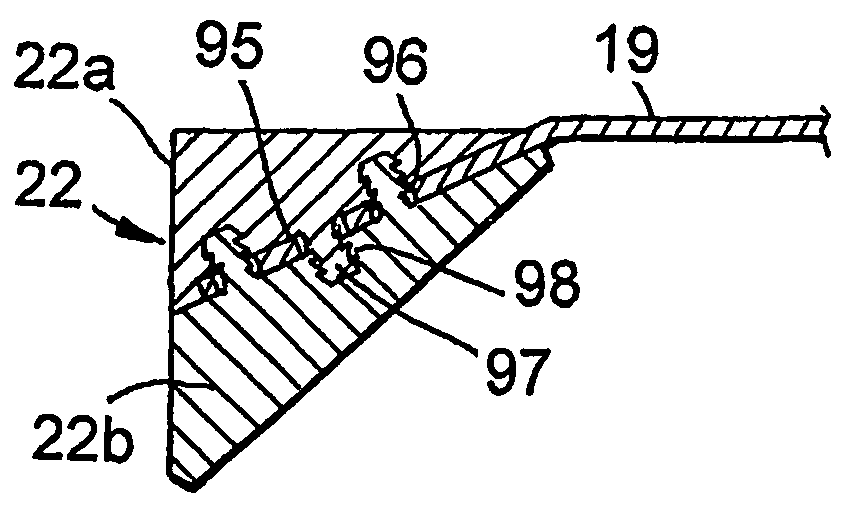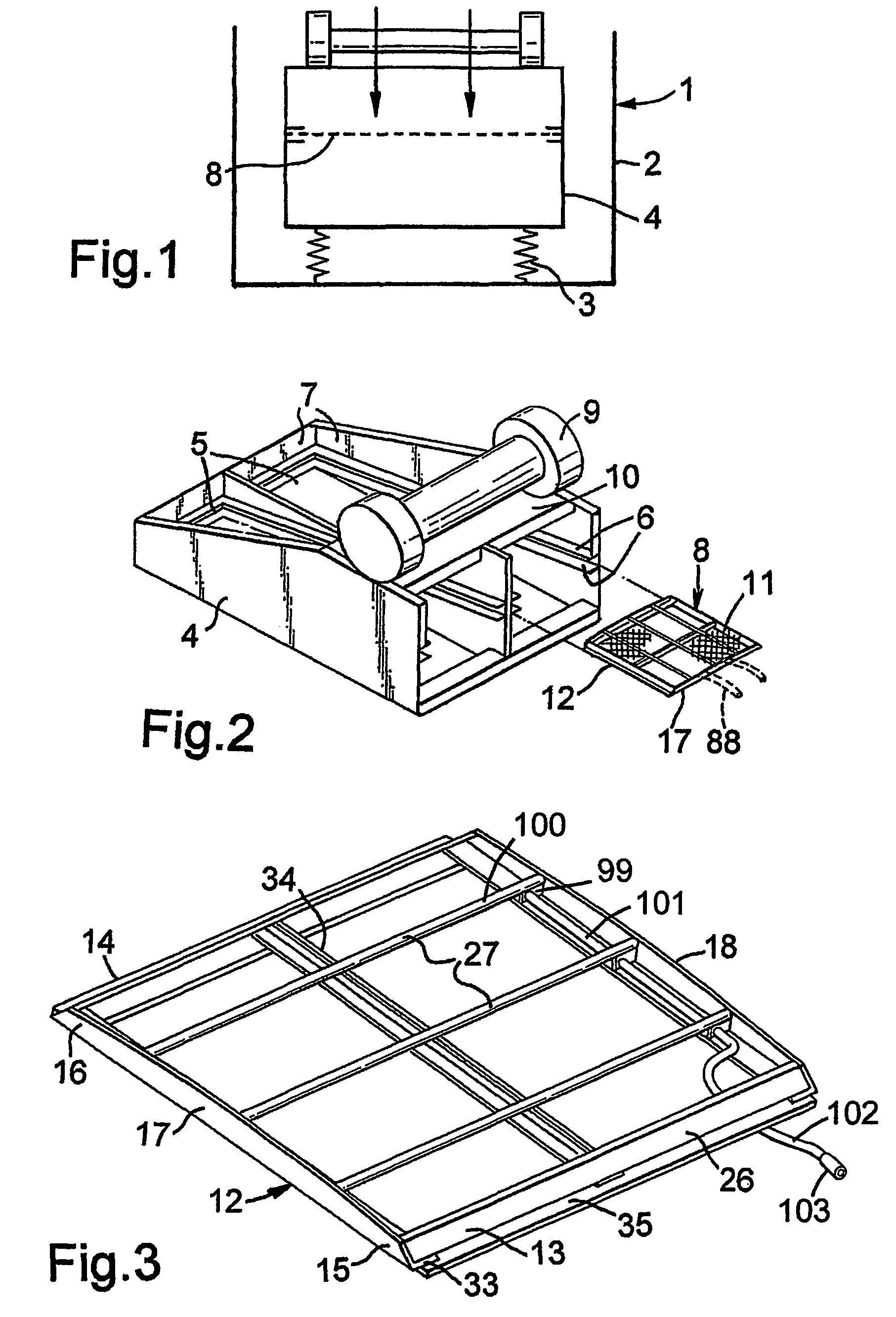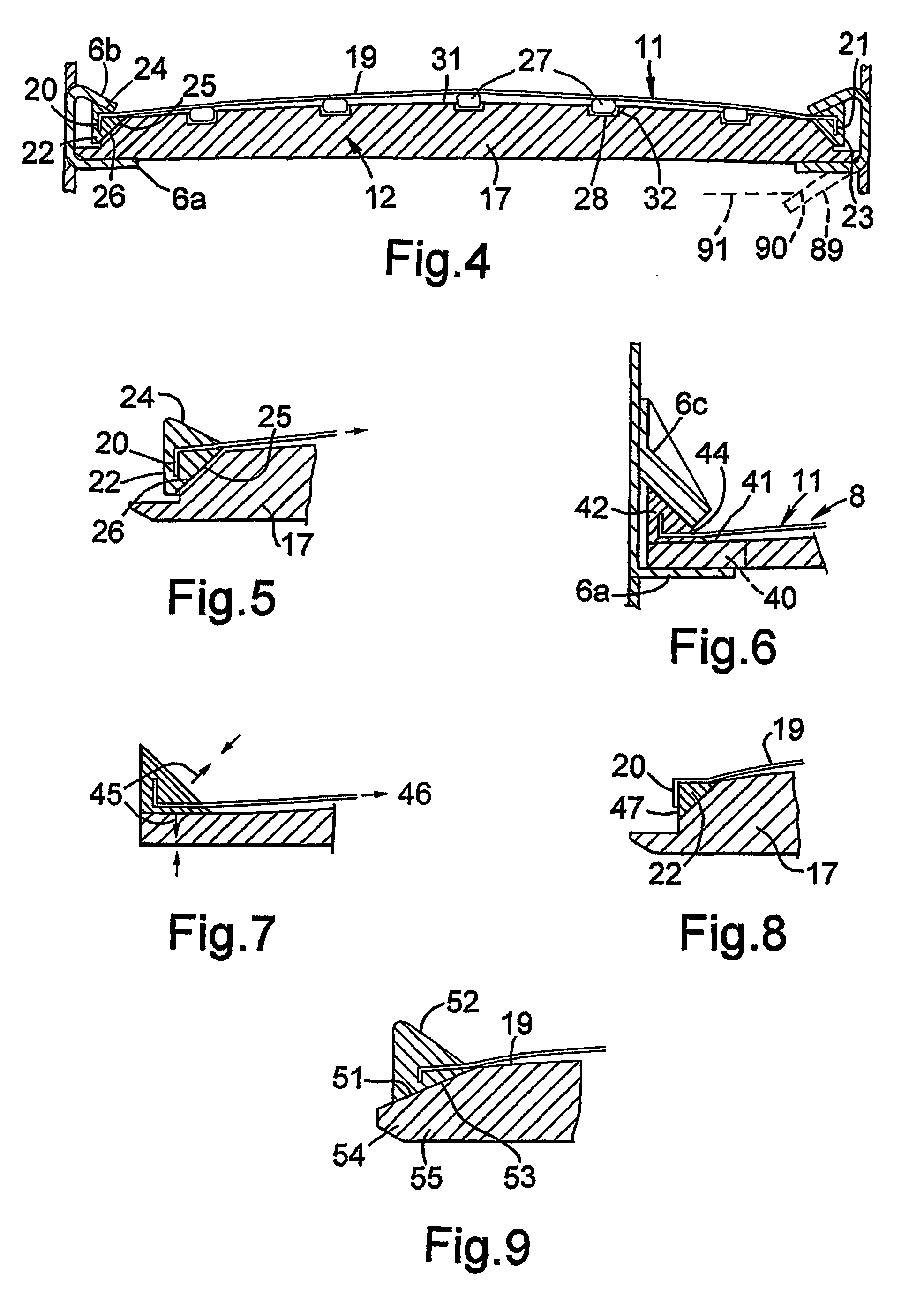Screen system
a screen and basket technology, applied in the direction of screening, moving filter element filtering, screening, etc., can solve the problems of poor sealing between the screen and the basket, easy damage to the screen, and significant downtime of the vibratory screen apparatus, so as to facilitate installation and removal of the screen elements, facilitate the effect of flexible flexibility and convenient formation
- Summary
- Abstract
- Description
- Claims
- Application Information
AI Technical Summary
Benefits of technology
Problems solved by technology
Method used
Image
Examples
Embodiment Construction
[0054]FIG. 1 shows schematically a vibratory screen apparatus 1 with an outer housing 2 in which is mounted on springs 3 a basket unit 4. Each basket 5 of the basket unit 4 (see also FIG. 2) is generally box shaped with a pair of circumferentially extending inwardly projecting flanges 6 at an intermediate height on the basket walls 7, for supporting a screen system of the invention 8 as typically found in existing pretension screen vibratory machinery. A vibrator unit 9 is secured to the top 10 of the basket unit 4. FIG. 4 shows a screen system 8 comprising a screen element 11 clamped to a support frame 12 (also shown in FIG. 3) between the basket flanges 6.
[0055]The support frame 12 comprises first and second elongate frame elements 13, 14 at opposite end portions 15, 16 and further elongate, third and fourth, frame elements 17, 18 interconnecting them.
[0056]As shown in FIG. 4 the screen element 11 comprises a mesh panel 19 having cranked opposite end portions 20, 21 anchored in fi...
PUM
| Property | Measurement | Unit |
|---|---|---|
| aperture diameters | aaaaa | aaaaa |
| angle | aaaaa | aaaaa |
| tensions | aaaaa | aaaaa |
Abstract
Description
Claims
Application Information
 Login to View More
Login to View More - R&D
- Intellectual Property
- Life Sciences
- Materials
- Tech Scout
- Unparalleled Data Quality
- Higher Quality Content
- 60% Fewer Hallucinations
Browse by: Latest US Patents, China's latest patents, Technical Efficacy Thesaurus, Application Domain, Technology Topic, Popular Technical Reports.
© 2025 PatSnap. All rights reserved.Legal|Privacy policy|Modern Slavery Act Transparency Statement|Sitemap|About US| Contact US: help@patsnap.com



